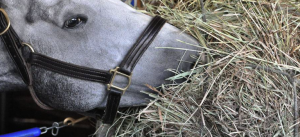 There are benefits to soaking hay and doing so can help to manage your horse’s health.
There are benefits to soaking hay and doing so can help to manage your horse’s health.
Even the cleanest, best-quality hay is likely to contain a moderate amount of fine material. When a horse plunges its head into a pile of hay or pulls mouthfuls out of a hay net, it inhales countless small particles of dust, mold spores, and fibrous plant material. Collectively known as the respirable dust concentration, or RDC, these fine particles can cause severe airway irritation in sensitive horses. Heaves, broken wind, and recurrent airway obstruction are terms for the condition that can manifest as mild coughing or severe bronchial spasms. These preclude any sort of training or exercise.
Management steps have been used to minimize RDC impact. The steps include wetting or soaking hay, selecting alternative bedding materials, and removing horses from stalls during periods of peak activity. The goals of this study were to establish the result of soaking hay on RDC in the horse’s breathing zone; to find out the usefulness of short immersion as opposed to longer soaking periods; and to investigate how management of one stall influences the RDC in a neighboring stall.
How was the study conducted?
The hay-soaking trial involved three hay treatments:
- dry hay
- hay immersed in a bucket of water and then fed immediately
- hay immersed for 16 hours prior to feeding.
These treatments were designated dry, immersed, and soaked, respectively. For each treatment, 5 kg of hay contained in a hay net was placed in the same location in the stall. Wood shavings were used for bedding. The stall was prepared an hour before the horse (a 15-year-old cob mare familiar with the site and the sampling equipment) was brought in. The hay net was placed in the stall ten minutes later, and RDC monitoring was begun after a further ten minutes. For each treatment, mean and maximum RDC readings were recorded in the horse’s breathing zone during a two-hour sampling period. Six repetitions were performed for each protocol.
The common air space tests were conducted in a stable with two side-by-side stalls. The stalls were separated by gates, sharing a common entrance and common air space above the divider. Each stall was approximately 4.5 m long and 4 m wide. Two treatments were used: (1) haylage, wood shavings, and an open window, or (2) hay, straw bedding, and a closed window. The same mare was brought into the stall by 6:00 p.m. and was undisturbed until she was turned out at 8:30 a.m. Manure and dirty/soaked bedding were removed immediately after the horse left the stall. Fresh bedding, if needed, was added daily, and hay or haylage was provided in a hay net suspended in the corner of the stall. The second stall contained no feed or bedding, and these materials were not stored in the vicinity of the building.
Air sampling was conducted in both stalls. Eight days of sampling were done for each treatment. Mean and maximum RDC readings between the stalls were compared to determine the effect of treatment type and activity in one stall on air quality in an adjoining stall.
What results were found?
In the study of dry or immersed or soaked hay, there was a significant difference in RDC readings in the horse’s breathing zone for the three treatments. Feeding of immersed hay resulted in a 60% reduction in mean RDC compared with dry hay, and feeding of soaked hay resulted in a 71% reduction in mean RDC compared with dry hay.
Readings of maximum RDC showed that feeding immersed hay resulted in a 53% reduction compared with dry hay, while feeding soaked hay resulted in a 34% reduction compared with dry hay.
In the common air space study, it was found that changing the management system in the first stall from hay, straw bedding, and a closed window to haylage, wood shavings, and an open window resulted in a significant reduction in background mean RDC in both stalls. Making this management change reduced the median RDC value in the stall containing the horse by 73%, and in the second stall by 68%.
Readings were higher during periods of greater stable activity. Of 32 maximum RDC readings, 26 were recorded while the stall was being mucked out or at another period of activity. There was a 19-fold increase in RDC in the first stall while it was being mucked out. There was also a 9-fold increase in RDC in the adjoining empty stall when the first stall was being cleaned.
Because of procedural differences, a direct comparison could not be made between RCD readings from the two studies. However, the authors point out that, for horses bedded on shavings, mean RDC levels were lower when soaked or immersed hay was fed than when haylage was fed.
What does this information tell us about stable management to reduce respirable dust concentrations?
Several conclusions can be drawn from this research.
First, wetting hay before it is offered to horses can significantly reduce the concentration of dust in the horse’s breathing zone.
This study agrees with other research indicating there is not a great benefit to long periods of immersion as compared to brief immersion. The authors also point out that prolonged soaking of hay removes some soluble nutrients, so immersing or briefly soaking hay seems to be the most sensible course of action. Hay should be fed as soon as possible after wetting, as allowing hay to dry could allow RDC to increase.
Second, this study confirmed that optimizing the management system in one stall resulted in a significant reduction in RDC in an adjoining stall.
It can be inferred that storing hay or bedding material in or near a stable may impact air quality for stalled horses. Because peak RDC levels tended to coincide with times of high stable activity (mucking out, moving horses in or out of the stall), the practice of removing sensitive horses from the stable during these times should be considered.
Call the hay experts at J & J Hay Farms to discuss your needs and to help select the best hay for your budget and situation.
Article sourced from Kentucky Equine Research.
*The study, “Respirable dust concentrations in equine stables. Part 2: The benefits of soaking hay and optimizing the environment in a neighboring stable,” was conducted by JM Clements and RS Pirie, of the University of Edinburgh, United Kingdom.
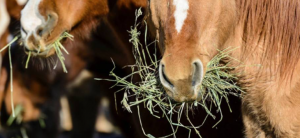 If your horse needs a low-carbohydrate diet, you can reduce the sugar concentration by soaking hay in water prior to feeding. While this has nearly become common knowledge, there is a lot of confusion about the best procedure to follow. How long do you soak the hay? In hot water or cold? By the half-bale or the fluffed-up flake? How much sugar is actually lost? And do all types of hay respond the same way to soaking? A study in England revealed some answers.
If your horse needs a low-carbohydrate diet, you can reduce the sugar concentration by soaking hay in water prior to feeding. While this has nearly become common knowledge, there is a lot of confusion about the best procedure to follow. How long do you soak the hay? In hot water or cold? By the half-bale or the fluffed-up flake? How much sugar is actually lost? And do all types of hay respond the same way to soaking? A study in England revealed some answers.
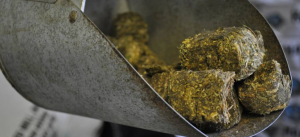 The five most common forage forms are pasture, hay, cubes, pellets, and haylage. Although, long gone are the days of wide-open pastureland for domesticated horses and ponies. Forage remains the primary constituent of most well-balanced equine diets, but nowadays it can be proffered in a multitude of forms, from traditional long-stemmed hay to symmetrical cubes.
The five most common forage forms are pasture, hay, cubes, pellets, and haylage. Although, long gone are the days of wide-open pastureland for domesticated horses and ponies. Forage remains the primary constituent of most well-balanced equine diets, but nowadays it can be proffered in a multitude of forms, from traditional long-stemmed hay to symmetrical cubes.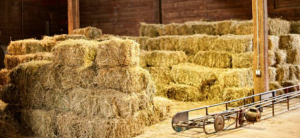 As grass begins to “green up,” horses wander further away from their
As grass begins to “green up,” horses wander further away from their 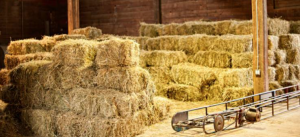 Can freshly-baled hay be fed to horses immediately? Must there be a curing period following baling and before feeding? Horse owners know that hay is often least expensive when it has been baled recently. Some people get an even deeper discount if they haul the bales from the hayfield themselves.
Can freshly-baled hay be fed to horses immediately? Must there be a curing period following baling and before feeding? Horse owners know that hay is often least expensive when it has been baled recently. Some people get an even deeper discount if they haul the bales from the hayfield themselves.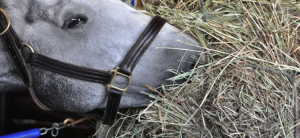 While chemical analysis of hay represents the gold-standard for evaluation of hay for horses, horse owners can tell plenty about a hay’s quality by a thorough visual examination.
While chemical analysis of hay represents the gold-standard for evaluation of hay for horses, horse owners can tell plenty about a hay’s quality by a thorough visual examination.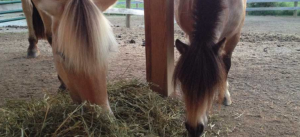 Feeding horses hay-based diets can be challenging but not impossible with these tips. Most horses not participating in heavy work can maintain a healthy body condition score. By being offered forage as the only source of calories. According to the National Research Council’s Nutrient Requirements of Horses. This being in addition to access to fresh water and a salt supplement.
Feeding horses hay-based diets can be challenging but not impossible with these tips. Most horses not participating in heavy work can maintain a healthy body condition score. By being offered forage as the only source of calories. According to the National Research Council’s Nutrient Requirements of Horses. This being in addition to access to fresh water and a salt supplement.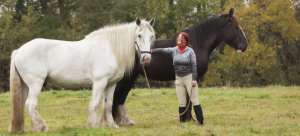 Is your horse overweight? Obesity is a major health concern for horses. “Horses carrying excess weight are at higher risk for laminitis and metabolic problems,” said Kathleen Crandell, Ph.D., longtime nutritionist at
Is your horse overweight? Obesity is a major health concern for horses. “Horses carrying excess weight are at higher risk for laminitis and metabolic problems,” said Kathleen Crandell, Ph.D., longtime nutritionist at 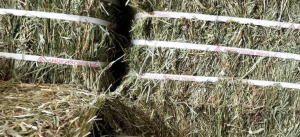 Wetting hay reduces allergens that contribute to asthma and decreases nonstructural carbohydrate content. Despite its benefits, soaking for even short periods of time can result in substantial loss of nutrients. As a result, high-temperature steaming of horse hay may be more beneficial.
Wetting hay reduces allergens that contribute to asthma and decreases nonstructural carbohydrate content. Despite its benefits, soaking for even short periods of time can result in substantial loss of nutrients. As a result, high-temperature steaming of horse hay may be more beneficial. There are benefits to soaking hay and doing so can help to manage your horse’s health.
There are benefits to soaking hay and doing so can help to manage your horse’s health.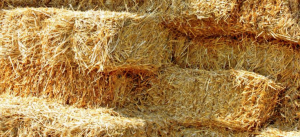 In a German study, horses showed a preference for straw bedding. Warmblood horses were bedded on wood shavings, loose straw, or straw pellets. Behaviors such as eating hay, lying down, and nosing through bedding were recorded for each horse during its time in the stall, which totaled about 15 hours each day.
In a German study, horses showed a preference for straw bedding. Warmblood horses were bedded on wood shavings, loose straw, or straw pellets. Behaviors such as eating hay, lying down, and nosing through bedding were recorded for each horse during its time in the stall, which totaled about 15 hours each day.